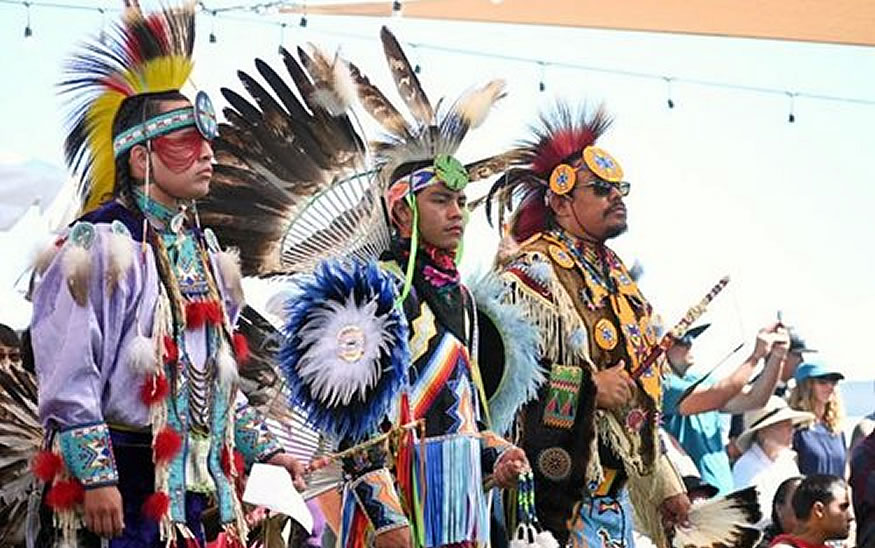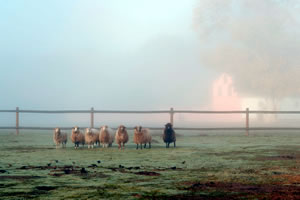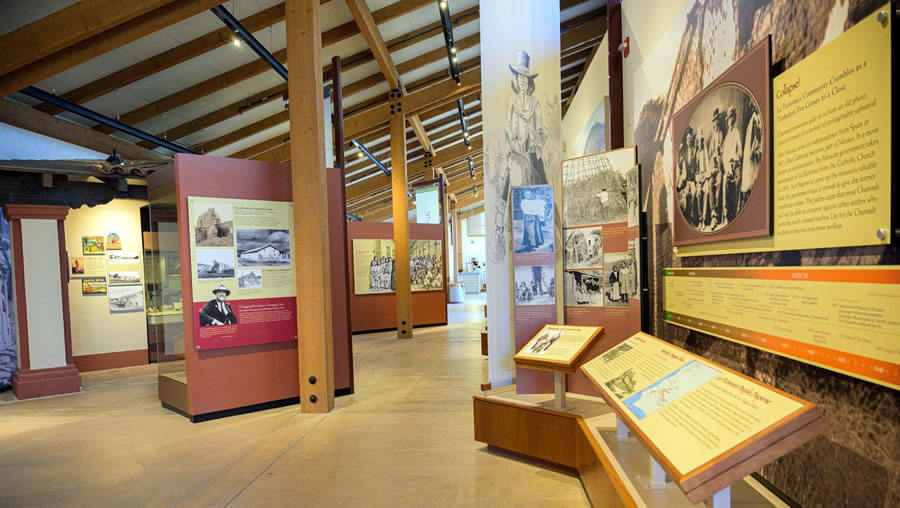Int. en Inglés | The history of the Chumash people
The first people of California's Central & Southern Coasts
For thousands of years, it is estimated that more than 20,000 Chumash people lived across California's coastline. Their storied past can be traced to the Channel Islands; “Chumash” translates to “people of the islands,” and the success of their rich and thriving culture is directly linked to their respect for the natural resources they were surrounded by – on land and in the ocean.
28.11.2022 00:00 | Santa Maria Valley |
From historic cities like Nipomo, Lompoc, and Sisquoc in Santa Maria Valley, to the south of Malibu and to the north of San Luis Obispo——the history of the Chumash people, and their lives today, offer one of the most advanced, complex, and remarkable cultures on the continent. There are many places and ways to experience this deep-seeded history across California's Central Coast. All you have to do is know where to look.
Hunters, Gatherers, & Adept Seafarers
The Chumash had both fear and the utmost respect for the knowledge that nature provided. They were innovative and resourceful, and were not dependent on traditional agricultural practices. Their 'tomols' (boats and canoes) gave them an abundance of fishing and trade opportunities, and allowed them to travel up and down the coast to other villages.
The Chumash Trail, a 1.2-mile out-and-back trail is one way to truly take in the expansive area the Chumash people called home. The trail takes hikers straight up the steep shoulders of Mugu Peak and gives way to expansive views of the Santa Monica Mountains, the Ventura and Santa Barbara County coastlines, and the Channel Islands. This trail connected the rich tidelands of Mugu Lagoon with the gentle La Jolla Valley area, which was dotted with many Chumash villages.
The Chumash people ate seasonally—primarily gathering acorns, seeds, bulbs, roots, and nuts, as well as wild game like bears, seals, otters, shellfish, deer and rabbits. The availability of both warm and cool climates, from both the water and the land, made way for rich resources and a strong connection to nature. Their homes (called 'ap 'ap) were built to be waterproof and made with local plant materials. Their baskets and mats were woven (these and beads were used for trade), and bones and plants were—and still are—used for tools and clothing to this day.

Art, Religion, Plants, & Stars
With revenue from the Chumash Casino Resort located in Santa Ynez Valley, the Santa Ynez Band of Chumash Indians continue to provide cultural enrichment programs that ensure their culture remains strong within the tribe and is preserved for future generations. Coming in 2023, they will open the Santa Ynez Chumash Museum & Cultural Center. Like their ancestors, whose art and games were designed to teach younger children about sportsmanship and useful skills for hunting and crafts, the programs and stories told today still aim to teach children about the Chumash people's relationship with nature and their cultural and religious beliefs.
Those looking to learn more are encouraged to explore the integral trade networks that were developed with the Yokuts in the southern San Joaquin Valley along the Santa Maria and Cuyama rivers at La Purisima Mission State Historic Park in Santa Maria Valley. This land is where many Chumash people called home. Here, you can learn more about the Central Chumash languages which became known as 'Purísimeño,' their trade networks, and how they applied their study of the stars and plants to everyday life.
How the Chumash Shaped Santa Maria Valley
Chumash trade and travel routes blanketed what is now known as the Santa Maria Valley. Trails that lead to salt and water were used by these native peoples. In fact, the Chumash Tribe, along with others, has been working to protect the coastline they have valued and called their home for centuries, with the proposed Chumash Heritage National Marine Sanctuary. In 2021, the National Oceanic and Atmospheric Administration (NOAA) published a Notice of Intent advancing the public process to designate the Chumash Heritage National Marine Sanctuary (CHNMS). NOAA is continuing the forward movement of this designation process.
to salt and water were used by these native peoples. In fact, the Chumash Tribe, along with others, has been working to protect the coastline they have valued and called their home for centuries, with the proposed Chumash Heritage National Marine Sanctuary. In 2021, the National Oceanic and Atmospheric Administration (NOAA) published a Notice of Intent advancing the public process to designate the Chumash Heritage National Marine Sanctuary (CHNMS). NOAA is continuing the forward movement of this designation process.
Chumash names are still used throughout the region, including Pismo, which was derived from the Chumash word for the asphaltum tar that seeps through natural fissures in the earth and sea floor. Hueneme and Malibu were also once the Chumash villages of Wene'me and Maliwu, too. Of the 21 missions along California's Historic Mission Trail which are either on or near Highway 101, La Purisima Mission Historic State Park is the most fully restored and pays homage to the first inhabitants of California's Central and Southern Coasts.
The Chumash's influence on Santa Maria Valley can be seen just about everywhere you look. Some of this can be found today in the artwork and paintings in the caves found in the rolling hills along the coastline. And, many cities throughout Santa Maria Valley and Santa Barbara County still use traditional Chumash names.
The Chumash people's way of life and respect for the rich Santa Maria Valley is something tribal members have worked hard to preserve by sharing their culture and traditions throughout Santa Maria Valley, and beyond.
Hunters, Gatherers, & Adept Seafarers
The Chumash had both fear and the utmost respect for the knowledge that nature provided. They were innovative and resourceful, and were not dependent on traditional agricultural practices. Their 'tomols' (boats and canoes) gave them an abundance of fishing and trade opportunities, and allowed them to travel up and down the coast to other villages.
The Chumash Trail, a 1.2-mile out-and-back trail is one way to truly take in the expansive area the Chumash people called home. The trail takes hikers straight up the steep shoulders of Mugu Peak and gives way to expansive views of the Santa Monica Mountains, the Ventura and Santa Barbara County coastlines, and the Channel Islands. This trail connected the rich tidelands of Mugu Lagoon with the gentle La Jolla Valley area, which was dotted with many Chumash villages.
The Chumash people ate seasonally—primarily gathering acorns, seeds, bulbs, roots, and nuts, as well as wild game like bears, seals, otters, shellfish, deer and rabbits. The availability of both warm and cool climates, from both the water and the land, made way for rich resources and a strong connection to nature. Their homes (called 'ap 'ap) were built to be waterproof and made with local plant materials. Their baskets and mats were woven (these and beads were used for trade), and bones and plants were—and still are—used for tools and clothing to this day.

Art, Religion, Plants, & Stars
With revenue from the Chumash Casino Resort located in Santa Ynez Valley, the Santa Ynez Band of Chumash Indians continue to provide cultural enrichment programs that ensure their culture remains strong within the tribe and is preserved for future generations. Coming in 2023, they will open the Santa Ynez Chumash Museum & Cultural Center. Like their ancestors, whose art and games were designed to teach younger children about sportsmanship and useful skills for hunting and crafts, the programs and stories told today still aim to teach children about the Chumash people's relationship with nature and their cultural and religious beliefs.
Those looking to learn more are encouraged to explore the integral trade networks that were developed with the Yokuts in the southern San Joaquin Valley along the Santa Maria and Cuyama rivers at La Purisima Mission State Historic Park in Santa Maria Valley. This land is where many Chumash people called home. Here, you can learn more about the Central Chumash languages which became known as 'Purísimeño,' their trade networks, and how they applied their study of the stars and plants to everyday life.
How the Chumash Shaped Santa Maria Valley
Chumash trade and travel routes blanketed what is now known as the Santa Maria Valley. Trails that lead
 to salt and water were used by these native peoples. In fact, the Chumash Tribe, along with others, has been working to protect the coastline they have valued and called their home for centuries, with the proposed Chumash Heritage National Marine Sanctuary. In 2021, the National Oceanic and Atmospheric Administration (NOAA) published a Notice of Intent advancing the public process to designate the Chumash Heritage National Marine Sanctuary (CHNMS). NOAA is continuing the forward movement of this designation process.
to salt and water were used by these native peoples. In fact, the Chumash Tribe, along with others, has been working to protect the coastline they have valued and called their home for centuries, with the proposed Chumash Heritage National Marine Sanctuary. In 2021, the National Oceanic and Atmospheric Administration (NOAA) published a Notice of Intent advancing the public process to designate the Chumash Heritage National Marine Sanctuary (CHNMS). NOAA is continuing the forward movement of this designation process. Chumash names are still used throughout the region, including Pismo, which was derived from the Chumash word for the asphaltum tar that seeps through natural fissures in the earth and sea floor. Hueneme and Malibu were also once the Chumash villages of Wene'me and Maliwu, too. Of the 21 missions along California's Historic Mission Trail which are either on or near Highway 101, La Purisima Mission Historic State Park is the most fully restored and pays homage to the first inhabitants of California's Central and Southern Coasts.
The Chumash's influence on Santa Maria Valley can be seen just about everywhere you look. Some of this can be found today in the artwork and paintings in the caves found in the rolling hills along the coastline. And, many cities throughout Santa Maria Valley and Santa Barbara County still use traditional Chumash names.
The Chumash people's way of life and respect for the rich Santa Maria Valley is something tribal members have worked hard to preserve by sharing their culture and traditions throughout Santa Maria Valley, and beyond.








